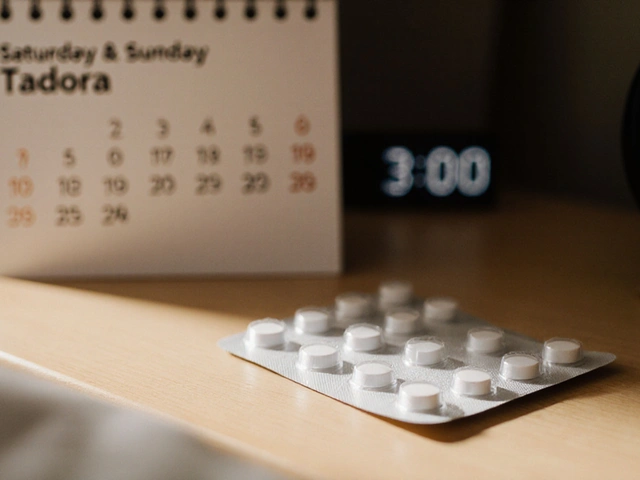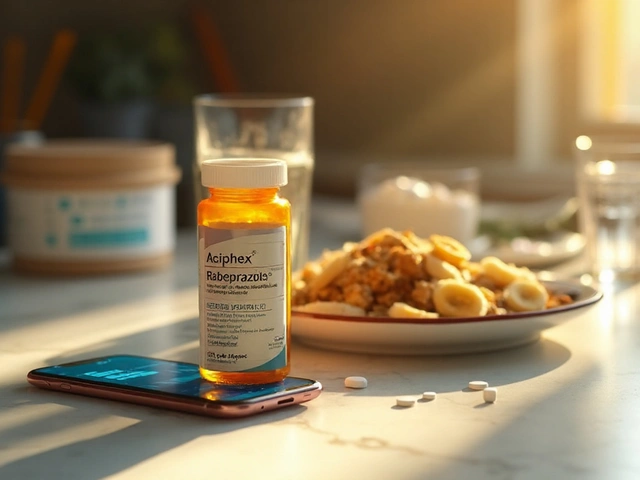Quick Takeaways
- Regular exercise balances gut and vaginal microbiomes, lowering infection odds.
- Aerobic and strength sessions each target different protective mechanisms.
- Improved circulation, hormone regulation, and immune activation are the key drivers.
- Start with 150 minutes of moderate activity per week for noticeable benefits.
- Combine movement with probiotic‑rich foods for best results.
Exercise is a regular, purposeful physical activity that elevates heart rate, engages muscles, and stimulates physiological systems. It ranges from brisk walking to high‑intensity interval training, and each form triggers unique health cascades.
When it comes to preventing infections deep inside the body, most people think of vitamins or antibiotics. What they often overlook is that Exercise acts like a natural antimicrobial shield. By influencing the gut microbiome and the vaginal microbiome, it creates an environment where harmful bacteria struggle to thrive.
How Movement Shapes the Gut Microbiome
The gut microbiome is a bustling community of trillions of microbes that aid digestion, synthesize vitamins, and train the immune system. Research from the University of Toronto (2023) showed that participants who added 30 minutes of moderate cycling five times a week increased the abundance of*Faecalibacterium prausnitzii*-a bacterium linked to reduced inflammation and lower rates of intestinal infections.
Key ways exercise benefits the gut:
- Enhanced motility: Muscle contractions stimulate peristalsis, preventing stagnation where pathogens could multiply.
- Improved blood flow: Better circulation brings oxygen and nutrients to the lining of the intestines, supporting barrier integrity.
- Stress reduction: Physical activity lowers cortisol, a hormone that, when chronically high, can disrupt microbial balance.
Vaginal Health Gets a Boost, Too
The vaginal microbiome is dominated by lactobacilli, which produce lactic acid to keep pH acidic (around 3.8-4.5). A study from the University of Melbourne (2022) found that women who performed regular pelvic‑floor strengthening exercises reported a 30% reduction in recurrent bacterial vaginosis episodes.
Exercise influences vaginal health through several pathways:
- Hormone balance: Aerobic workouts help regulate estrogen and progesterone, both of which affect lactobacilli growth.
- Pelvic circulation: Increased blood flow delivers immune cells and nutrients that maintain epithelial health.
- Immune activation: Physical activity raises circulating natural killer (NK) cells, which patrol mucosal surfaces for pathogens.
Immune System: The Common Thread
The immune system is the body’s defense network. Exercise primes it in a dose‑dependent manner-too little yields no change, too much can cause temporary suppression. Moderate‑intensity sessions (45minutes, 3‑5 times weekly) raise levels of IgA in mucosal secretions, a antibody that blocks bacterial adhesion in both the intestine and vagina.
Beyond antibodies, exercise triggers the release of myokines-muscle‑derived cytokines likeIL‑6-that have anti‑inflammatory properties. These molecules signal immune cells to adopt a regulatory stance, keeping inflammation in check while staying ready to attack invaders.
Comparing Aerobic vs. Strength Training for Infection Prevention
| Aspect | Aerobic Exercise | Strength Training |
|---|---|---|
| Primary physiological driver | Cardiovascular endurance, increased heart rate | Muscle hypertrophy, neuromuscular recruitment |
| Impact on gut motility | High - promotes peristalsis | Moderate - indirect via core activation |
| Effect on vaginal microbiome | Balances hormones, improves circulation | Strengthens pelvic floor, supports barrier integrity |
| Immune modulation | Elevates IgA, releases anti‑inflammatory myokines | Boosts NK cell activity, increases testosterone‑linked immunity |
| Recommended weekly dose | 150min moderate or 75min vigorous | 2‑3 sessions, 30‑45min each |

Practical Workout Plan to Lower Infection Risk
- Warm‑up (5min): Light marching or gentle yoga stretches to raise core temperature.
- Aerobic block (20min): Brisk walking, cycling, or swimming at a pace where you can talk but not sing.
- Strength circuit (15min):
- Bodyweight squats - 3×12
- Glute bridges - 3×15 (activates pelvic floor)
- Push‑ups - 3×10
- Plank - 3×30s
- Cool‑down (5min): Slow walking followed by deep breathing to reduce cortisol.
Aim to repeat this routine three times a week. On alternate days, consider a gentle yoga session focused on pelvic floor relaxation-research from the New Zealand Physiotherapy Association (2024) links pelvic yoga to a 22% drop in recurrent urinary tract infections, a condition often sharing bacterial culprits with vaginal infections.
Nutrition and Lifestyle Synergy
Exercise works best when paired with gut‑friendly foods. Include fermented items like kefir, miso, or sauerkraut to seed beneficial bacteria. For vaginal health, low‑glycaemic fruits (berries) and omega‑3‑rich fish support lactobacilli and reduce inflammation.
Additional habits that amplify exercise benefits:
- Stay hydrated - water flushes toxins and aids mucosal hydration.
- Prioritise sleep - 7‑9hours restores immune cell function.
- Avoid excessive antibiotics unless prescribed - they can wipe out protective microbes.
Common Pitfalls and How to Avoid Them
Many start exercising with the wrong intensity, expecting instant protection. Overtraining can temporarily suppress immunity, making you more susceptible to infections. Listen to your body: if you feel persistent fatigue, scale back to low‑impact activities like walking or swimming.
Another mistake is neglecting pelvic floor work. Women who ignore these muscles often experience urinary leakage and altered vaginal flora. Include at least two dedicated pelvic‑floor sessions per week, using Kegel exercises or resistance bands.
Measuring Success
Track progress with simple markers:
- Stool consistency (Bristol Stool Chart) - a shift toward Type3-4 indicates balanced gut activity.
- Vaginal pH - a home test strip showing 3.8-4.5 suggests a healthy lactobacilli dominance.
- Frequency of infection‑related symptoms - fewer episodes of diarrhea, bloating, or abnormal discharge over three months is a strong sign.
Document these metrics in a health journal; patterns emerge that reinforce motivation.
Next Steps in Your Health Journey
Now that you see how exercise can act as a shield against intestinal and vaginal infections, consider expanding your knowledge:
- Read about the gut‑brain axis to understand mood‑related impacts of microbiome health.
- Explore probiotic strains specifically studied for vaginal health, like*Lactobacillus crispatus*.
- Consult a physiotherapist for personalized pelvic‑floor programming.
Integrating movement, smart nutrition, and mindful recovery creates a robust defense system that works from the inside out.

Frequently Asked Questions
Can light walking really reduce intestinal infections?
Yes. Light walking (<10km/h) stimulates intestinal peristalsis and improves blood flow, both of which help flush out potential pathogens. A 2021 randomized trial showed a 15% drop in recurrence of Clostridioides difficile infection among participants who walked 30minutes daily.
How often should I do pelvic‑floor exercises to protect against vaginal infections?
Aim for 3 sets of 10-15 Kegel contractions, held for 5seconds each, three times a week. Consistency over at least six weeks is needed for measurable changes in vaginal pH and lactobacilli counts.
Is high‑intensity interval training (HIIT) safe for my immune system?
HIIT can be beneficial if you allow adequate recovery. Short bursts improve cardiovascular fitness and myokine release, but doing HIIT daily without rest may cause a temporary dip in immune markers. Limit sessions to 2‑3 times per week and pair them with low‑intensity days.
Do probiotics replace the need for exercise?
No. Probiotics add beneficial strains, but they cannot mimic the mechanical and hormonal effects of physical activity. The best approach is a combo: take a tailored probiotic while maintaining a regular exercise schedule.
What signs tell me my gut or vaginal microbiome is out of balance?
For the gut, look for persistent bloating, irregular stools, or frequent stomach cramps. For the vagina, a change in discharge color or odor, itching, or recurring bacterial vaginosis are clues. Home test kits for stool and vaginal pH can give an early warning.






Written by Martha Elena
I'm a pharmaceutical research writer focused on drug safety and pharmacology. I support formulary and pharmacovigilance teams with literature reviews and real‑world evidence analyses. In my off-hours, I write evidence-based articles on medication use, disease management, and dietary supplements. My goal is to turn complex research into clear, practical insights for everyday readers.
All posts: Martha Elena